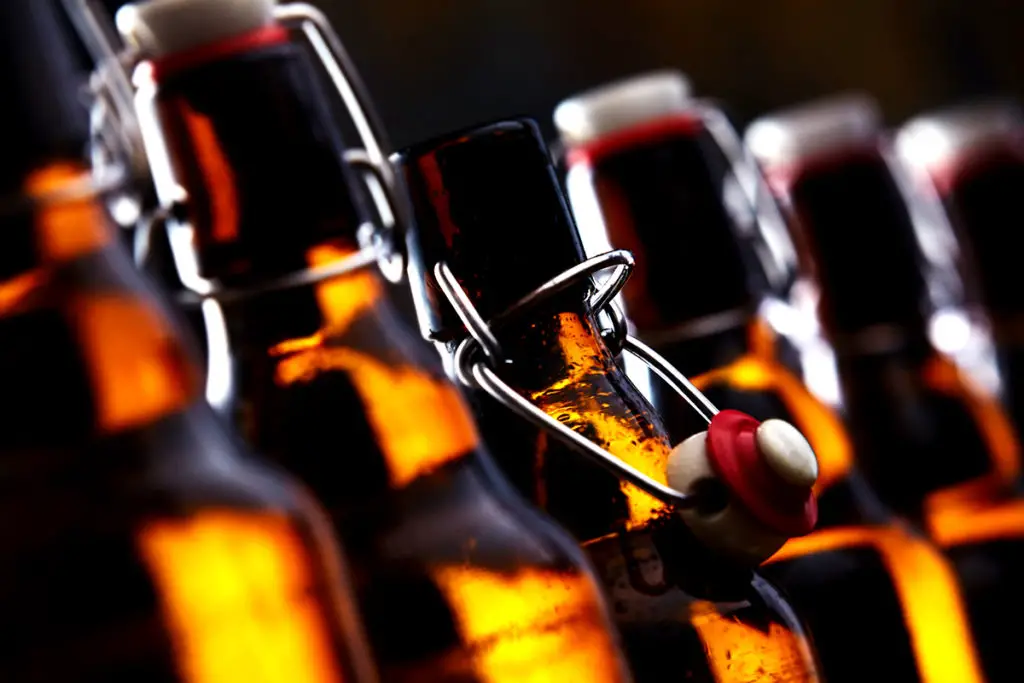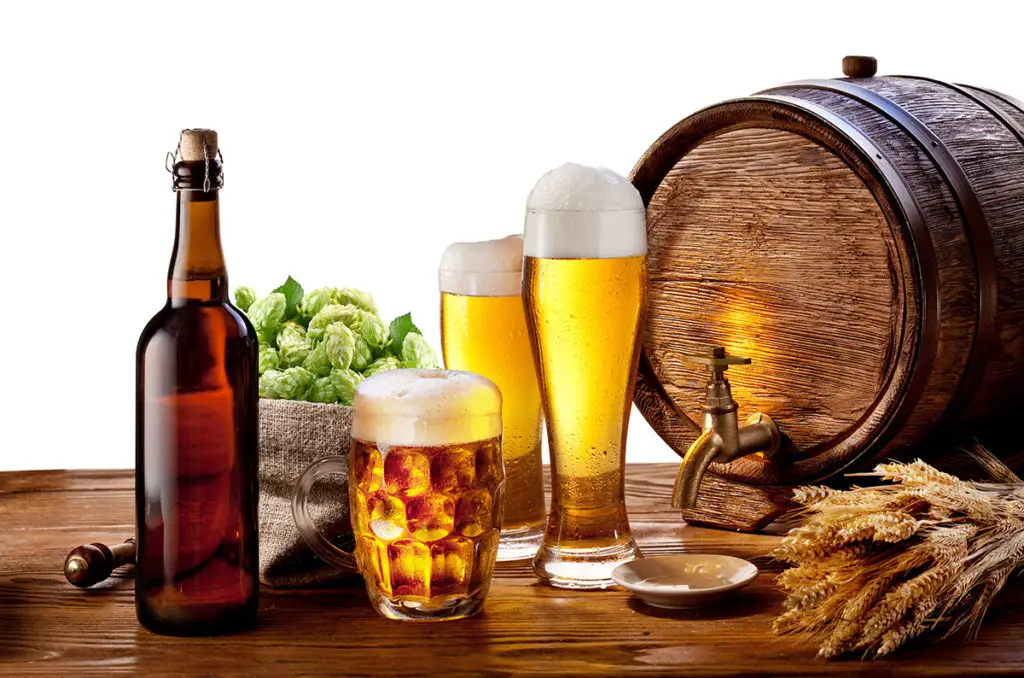One of the challenges of homebrewing your own beer is figuring out how to carbonate it. Factories and breweries use high-end equipment to achieve this result, but you’re unlikely to have comparable equipment in your home unless you’re looking to take your home brew operation professional.
That’s where bottle conditioning your beer comes in. But how long does it take to bottle condition beer?
It will usually take you between 1 week and 1 month to bottle condition your beer, though in some cases, it can take up to 2 years. Factors that affect conditioning time include the ABV of the beer, the bottles used, the style of beer you’re brewing, and how much carbonation you want in your beer.
In this article, I’ll look at each of the above-mentioned factors and explain how they affect the bottle conditioning of your beer. I’ll also explain exactly what bottle conditioned beer is, so you know exactly why this step is so important.
Factors That Affect Bottle Conditioning
As mentioned above, there are various factors that affect how long it will take to properly bottle condition your beer. Let’s look at these in more detail.

BEER DROP: Boxes of beer from Award-winning microbreweries → Join The Club
ABV (Alcohol By Volume) & Bottle Conditioning Beer
One of the biggest factors that affect how long it will take to bottle condition your beer is the alcohol content you want the drink to have. Essentially, the more alcohol in your beer, the longer it’ll take to bottle condition.
As I’ll discuss below, bottle conditioning involves fermentation, which involves the conversion of sugars into alcohol and carbon dioxide. It’s this carbon dioxide byproduct that gives your beer its fizz.
How long your beer takes to ferment completely depends on how much sugar is in the brew. More sugar means longer fermentation and more alcohol.
That said, you can, of course, stop the fermentation whenever you want if you’re hoping for a lighter beer. As I’ll discuss below, the type of beer you want affects the length of bottle conditioning.
However, to give you a quick idea of the difference, a light lager, with lower alcohol, can be fully conditioned within a few weeks.
Really dark and heavily alcoholic beers can take significantly longer to bottle condition, as long as 6 months to 2 years, in fact. That said, most beers won’t take anywhere near as long to condition, and most beers will be done within a month.
Style of Beer Affects Bottle Conditioning Time
Let’s look at the differences in bottle conditioning between beer styles in a bit more detail.

The lighter the beer, the less time it’ll take to carbonate. So, IPAs will take significantly less time to be ready as compared to stouts and lagers.
Here are a few common types of beers and how long they will take to bottle condition:
- Pale ales, IPAs, and imperial IPAs will take under a week to be ready, though you can let them sit for up to a week. Complete carbonation will take longer – between 2-4 weeks.
- Lagers will generally take 3-4 weeks to bottle condition. Carbonation is faster and should be done in 3 weeks at the most.
- The darkest and/or most alcoholic beers will take significantly longer to condition. Stouts and imperial stouts will take between 3-6 months, and porters can take as much as 4 months. Belgian tripels, which are pale but high in alcohol, will also take time to bottle condition – about 4-6 months. Carbonation will be done faster, ranging from 2-4 weeks, depending on the style.
In general, you’re unlikely to be homebrewing something that takes a long time to condition. After all, the longer a beer takes you to condition, the longer you’ll have to wait to enjoy it.
However, if you do, make sure you’ve considered the time it takes for the beer to condition properly.
More complex beers will only improve in flavor over time and develop a caramel flavor due to the ongoing Maillard reaction. This means that allowing them the months they need to bottle condition will ensure you’re able to enjoy them at their best flavor.
Types of Bottles Used Can Affect Beer Conditioning Time
Bottling beer at home can be done in either glass or plastic bottles.
But unlike commercial beer breweries, you’re unlikely to have the equipment necessary to can your beer in your house. The beer bottle you choose will affect how long it takes to condition your alcohol and how the conditioning will proceed.
When conditioning in plastic bottles, you’ll have to be very careful not to over-condition your beer.
Over-conditioning leads to over-carbonization, and plastic bottles can burst easily when stressed by too much carbonization. This is also why you should avoid plastic bottles for highly carbonated beers just to stay on the safe side.
Given the risks of conditioning with plastic bottles, it’s always better to opt for glass bottles where possible. That said, you’ll also have to consider the color of the bottles you choose, as the lighter the glass, the more light and heat the bottle lets in.
More light and a higher temperature mean faster carbonation.
While this may seem like a good thing, it can often throw timelines off, and you may find you’re no longer able to accurately determine when your beer is properly conditioned and carbonated.
Related: Cleaning & Sanitizing Beer Bottles the Right Way! (4 Easy Steps)
Carbonation and Conditioning Your Beer
Different types of beer have different carbonation needs, and the amount of carbonation a beer needs will affect how long it takes to bottle condition. Beers with low carbonation, like dry stouts and English ales, usually require only about a third of the carbonation that highly carbonated beers (Belgian blonds, German weissbiers) need.
As discussed above, each type of beer has different bottle conditioning and carbonation times.
However, the higher the carbonation, the longer the beer will take to condition and carbonate. This is because higher carbonation means that the beer needs more sugar, and higher amounts of sugar will, in turn, take longer for the yeast in the beer to metabolize completely.
Additionally, carbon dioxide is more soluble in beer.
This is why beer is often served cold in restaurants. But it also means that highly carbonated beers are often brewed and fermented at lower temperatures. As mentioned, temperature affects bottle conditioning, because the higher the temperature, the faster the conditioning.
This means the low temperatures involved in brewing carbonated beers result in bottle conditioning taking longer.
Understanding Bottle Conditioning
So, we’ve discussed how long it takes to bottle condition beer, but what exactly is bottle conditioning, and why is it important?

Bottle conditioning is one of the ways in which you can add carbonation to beer and is the easiest option for people brewing beer at home. It essentially involves adding a small amount of priming sugar to the beer after it has been fermented and then sealing the bottle.
Once the sugar is added, the live yeast still present in the brew will get to work, setting off a secondary fermentation reaction. This is a smaller reaction than the primary fermentation and is focused on carbonation rather than the conversion of sugar to alcohol.
One of the byproducts of fermentation is carbon dioxide (CO2).
The CO2 produced during the original fermentation is lost during post-brewing activities, such as transferring the beer to bottles. Thus, the secondary fermentation reaction ensures that your beer is carbonated, and the sealing of the bottle ensures that no CO2 is lost.
However, bottle conditioning is not limited to carbonation. Carbonation is only a part of the process, but the rest involves aging the beer.
Just as wine is aged, bottle conditioning ensures that all the complex flavors in the beer are released, and, like with wine, some brewers believe that the longer a beer is allowed to bottle condition, the better it’ll be.
This is why some brewers will let their beer condition for several years, even as long as a decade. However, for most homebrewers, bottle conditioning shouldn’t take more than a month to a couple of months unless you want to store a special bottle.
Because conditioning involves both carbonation and aging, it’s essential to allow the beer enough time to rest. Some beers carbonate faster than they age (like lagers), and others age faster than they carbonate, such as pale ales and IPAs.
Allowing enough time for both will ensure your final product is high quality.
How To Tell if Bottle Conditioning Is Finished
The only way to tell if a beer is done conditioning is to open it, which is why some brewers also condition smaller bottles that they can open to check if a batch is done conditioning.
However, there are some tricks you can use to check carbonation status, which include the following:
- Check if there is a layer of sediment at the bottom of the bottle. This sediment is the dead yeast, and if the sediment stops building, you can tell that the secondary fermentation is done.
- Turn the bottle over to see if carbonation bubbles are produced.
If the beer you’re producing takes longer to carbonate than to age, confirming that carbonation is over is a good way to determine when you can open the bottle. However, if aging takes longer, the only real way to test the flavor is to crack open a bottle and take a sip.
Final Thoughts
In general, bottle conditioning your beer should take up to a month. For more complex beers, there is a chance it can take as long as 4 months.
However, it should be noted that many brewers believe that longer bottle conditioning results in better flavor. For this reason, some brewers choose to let their beer condition for longer, including over a decade.
